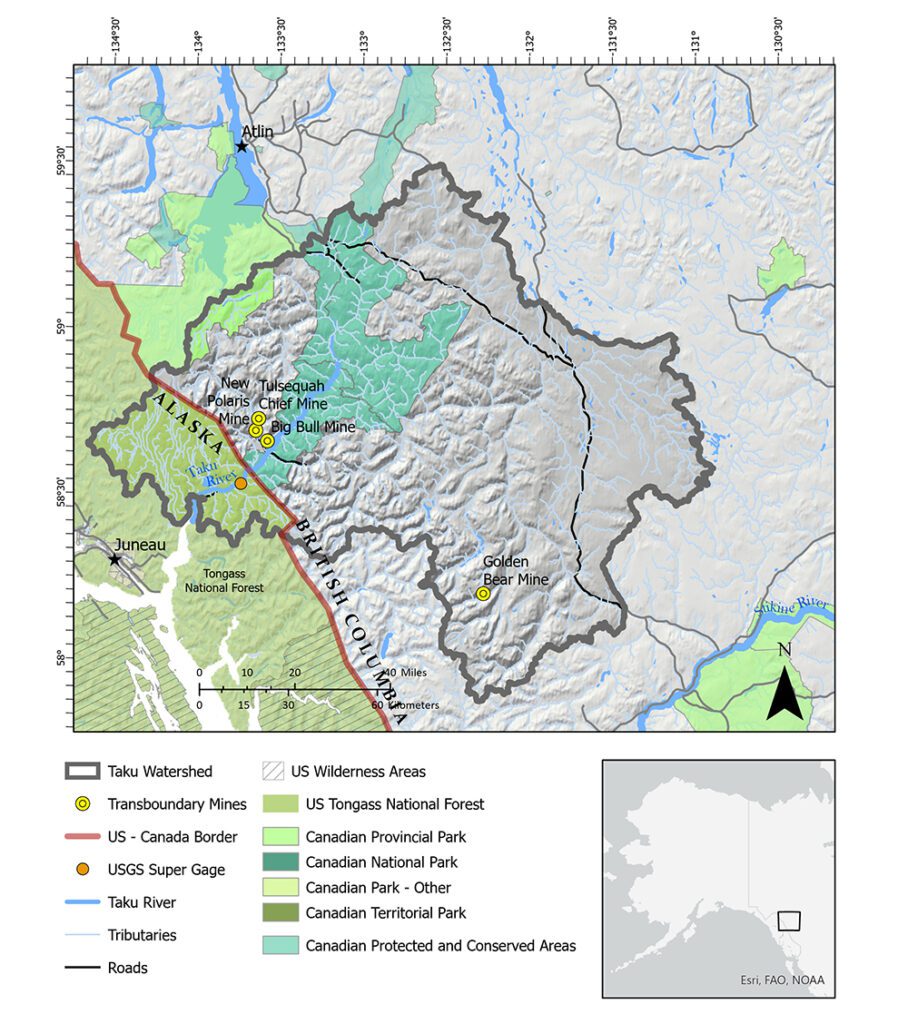
A large section of the Taku River watershed in northwest British Columbia has been established as an indigenous protected and conserved area (IPCA) by the Taku River Tlingit First Nation, in response to its concerns over adverse impact from mineral extraction and climate change.
The salmon-rich watershed, which covers 6,949 square miles or 1.8 million hectares, is the largest watershed on the Pacific Coast of North America inaccessible by road.
The Taku River Tlingit First Nation, in Atlin, B.C. said its intent is to protect fisheries and wildlife vital to their health and cultural well-being. They invited those interested in mineral extraction to work with them on any plans for mineral exploration and development within the managed areas of the IPCA.
The Taku River Tlingit have historically been miners and this IPCA provides a path forward for approved exploration, said Charmaine Thom, spokesperson for the First Nation entity.
“We will consider mining and other more industrial types of development in specially managed areas,” Thom said. “These areas cover 40% of the Taku IPCA. They include zones with high mineral potential. With these, we are providing opportunities for respectful, clean mineral extraction and other uses that support a low carbon economy.”
Thom also said they look forward to implementing the IPCA with continued support of the governments of British Columbia and Canada, neighboring First Nations, communities, businesses and other partners.
The Taku River flows south in British Columbia and from there into Southeast Alaska, where salmon fisheries are critical to the area’s economy. The governments of British Columbia and Alaska have been in discussion for several years over the potential adverse impact of existing and planned mines abutting the shores of the Taku River as it flows into Alaska.
The nation is also undertaking a multi-year research effort, known as the Taku Salmon resiliency project, to understand the vulnerability and sensitivity of Taku salmon to climate change effects on their habitats and populations, with assessment of all information on salmon population metrics, Thom said.
The resiliency project is a multi-partner project with Simon Fraser University, Round River Canada, the University of Montana and Fisheries and Oceans Canada. Systemwide monitoring stations have been installed across the remote watershed, including water temperature monitors. Also being monitored are key population parameters including the number, size and age of returning salmon.
